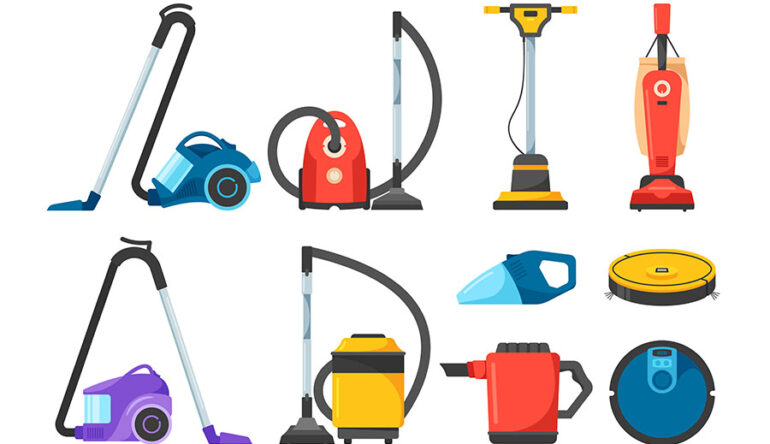If you’re running a vacuum cleaner ecommerce, you’ve probably tried Google Ads. Maybe even hired someone to run your PPC. And sure, you got some results – clicks, sales, maybe even a decent revenue boost.
But the profit?
Likely still stuck somewhere between disappointing and nonexistent.
Burning a ton of cash just to sell a $180 unit and realize the margin’s been wiped out by shipping, returns, and discounts is an everyday scenario.
We’ve seen the same problems for years, so in this article, we’ve decided to show you how it should be done. How to structure, manage, and scale a Google Ads campaign – based on experience and results we’ve achieved with a client from the same niche: VacuumSpares.com.au.
So let’s get down to business.
More Sales ≠ More Money
Once you’ve taken a Google Ads crash course, getting more sales isn’t that hard.
Getting more profitable sales is the tricky part.
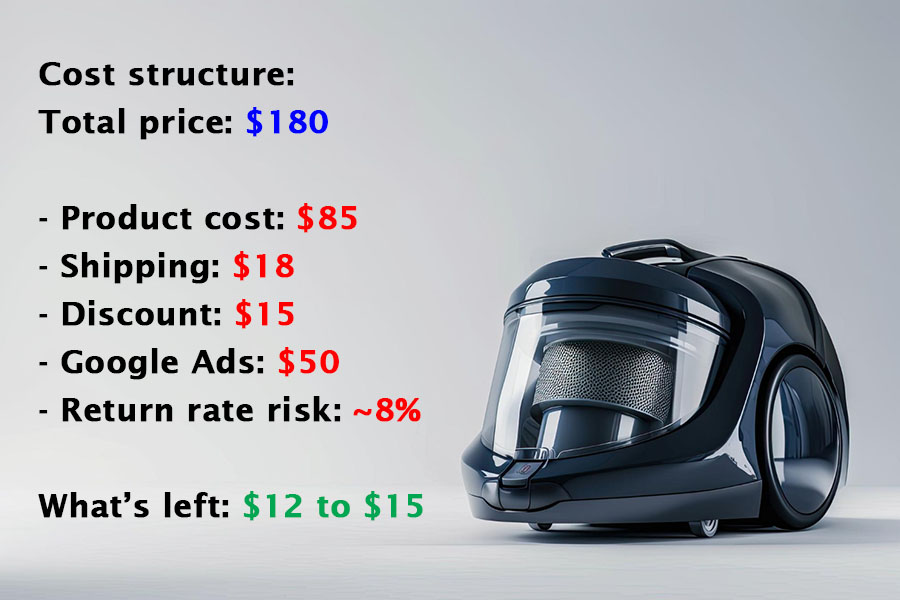
A typical scenario:
You sell a canister vacuum for $180. Looks great on your sales dashboard. But digging into the cost structure isn’t as pretty as it seems:
- Product cost: $85
- Shipping & packaging: $18
- Discount applied: $15
- Google Ads spend on that sale: $50
- Return rate risk: ~8%
What’s left? Maybe $12 to $15. And that’s on a “good day.”
(We haven’t even mentioned transactional fees, returns, customer support, etc.)
This is why we push every client to move away from vanity metrics like CTR and total revenue, and focus on profit-first advertising. That means building a campaign strategy around:
- Product-level margins
- Customer lifetime value (CLV)
- Return rates and shipping costs
- And ultimately, the real CAC (Customer Acquisition Cost) you can afford
Build on Solid Foundations
Before you even touch a campaign, you need to make sure your store can turn paid clicks into sales.
Let’s break down what strong foundations look like:
1. Your Margins Can Handle Paid Traffic
When you’re working with razor-thin margins, paid traffic becomes a risky game.
Margins don’t have to be massive, but they need to be high enough to:
- Cover CAC (Customer Acquisition Cost), which for vacuums typically runs €30 to €60
- Absorb occasional returns
- Ideally, turn a profit on the first sale, or shortly after, via upsells (bags, filters, parts).
For Google Ads, you either need high-margin products or a repeat-purchase model.
$12 to 15$ profit for a $180 vacuum cleaner won’t cut it.
2. Solid UX

You can set the best campaign possible, but if you don’t convert visitors into customers, it’s all for nothing. And that’s where UX and Customer Journey come into play.
For ecommerce stores in the vacuum cleaner space, here’s what a “conversion-ready” store looks like:
- Mobile load time under 3 seconds
- Clear product structure: categories by brand, model, type (robot, stick, bagless), and filters that are actually useful for the user
- Super-optimized product pages: accurate naming, clear and useful description, social proof (reviews), native visuals with multiple photos, comparisons, “fits with” compatibility (for parts), etc.
- Simple checkout process with trust signals and guest checkout
3. You’re Tracking What Matters
It sounds basic, but most accounts we audit either don’t track purchases at all or track them wrong.
Impressions and clicks matter, but you need to dig much deeper than that. At a minimum, you need:
- Google Ads conversion tracking with real revenue passed through
- Enhanced conversions (for better attribution)
- GA4 is properly connected, clean event setup, no double-tracking
- Optional: import margin instead of revenue if you want to optimize by profit
If you don’t give Google valuable data, the algorithm can’t optimize properly.
Exact Strategies We Use to Scale Profitable Vacuum Shops
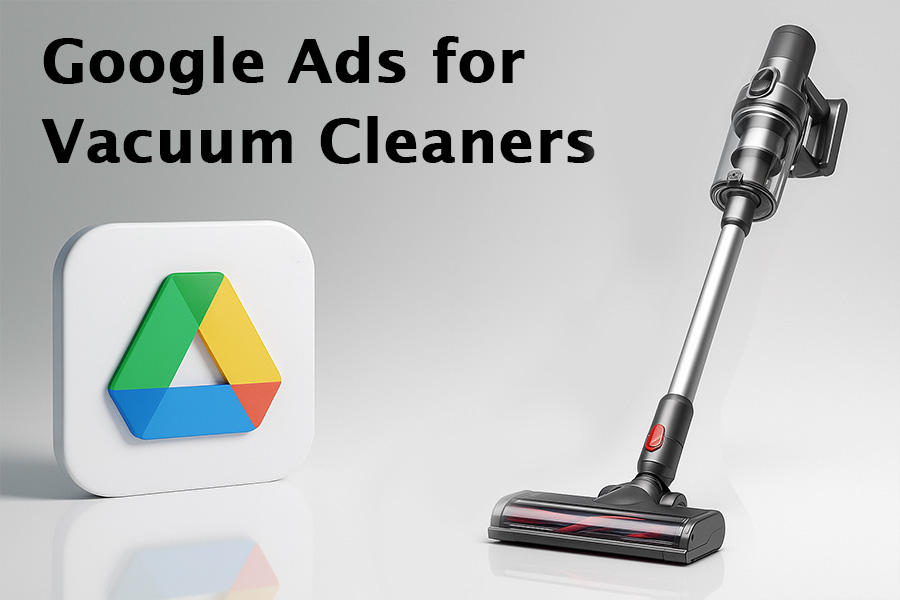
So, your margins are healthy. Your store’s in shape. Tracking is clean.
Now we can focus on the Google Ads strategy.
Campaign Launch Order: Start Lean, Then Layer
Don’t launch everything at once, and don’t trust Google’s “smart” defaults.
If you’re just starting, you should follow a phased rollout to maintain control and monitor progress at every stage:
- Standard Shopping
Start here to control product visibility, bidding, and search terms. It’s your base layer.
- Search Campaigns
Add intent-driven traffic using branded and product-specific keywords. Only after Shopping proves profitable.
- Dynamic Remarketing
Recover visitors who showed intent but didn’t convert (often, the highest ROAS).
- Performance Max (PMax)
Once you’ve seen what works, let Google automate, but with data and structure in place.
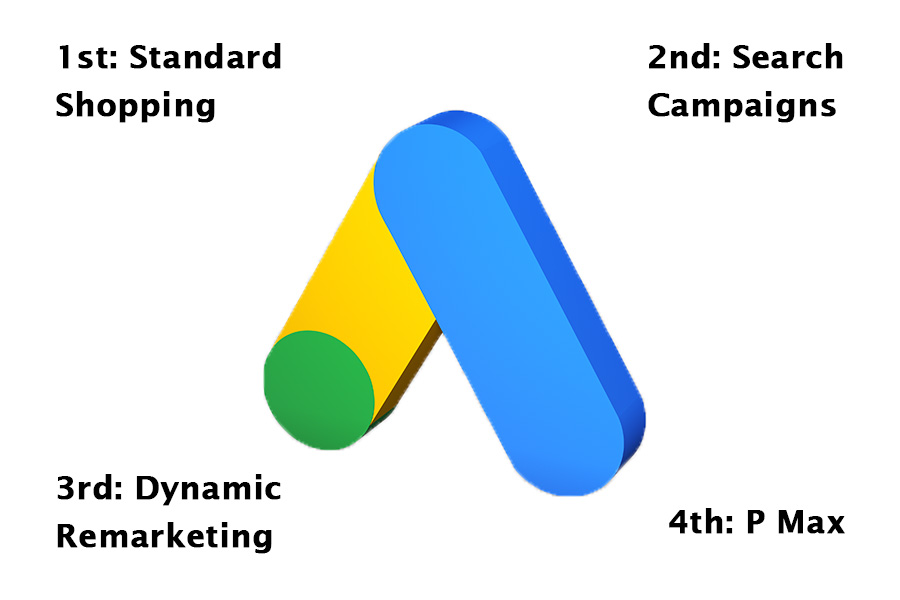
Don’t start with Display, YouTube, or Smart Campaigns. They’re too broad and optimized for impressions.
Shopping Campaign Best Practices
Vacuum cleaner buyers are often focused on a specific product or brand.
Segment product groups by brand (e.g. Shark, Dyson), model types (robot, stick, bagged), or even margin tiers (advanced method).
Custom labels will help you mark high-margin or top-converting SKUs. This lets you adjust bids surgically.
Also, don’t forget about the negative keywords list to avoid showing ads for unrelated queries (“vacuum memes” or “Dyson manual PDF”). For this, you’ll need a keyword research tool like Ahrefs or SEMRush.
Optimize product feeds as much as possible. Errors are common, and they should be reduced to a minimum.
Search Campaign Tactics
We structure search campaigns like this:
- Non-Branded / Product-Specific Campaigns
This is where people search for solutions, not brands. These are competitive keywords, but they come from high-intent buyers who don’t care if it’s Dyson, Hoover, or a solid private-label option – they just want a vacuum that does the job.
We segment out these campaigns into themes: use case (for pet hair, for allergies, for hardwood floor…), type (stick, bagless, cordless…), pain point or benefit (quiet, lightweight, fits under furniture..), or accessory-focused keywords.
Each theme gets its own ad group or even separate campaigns.
- Competitors Campaigns
Bidding on your competitors’ branded terms? Risky, yes. But when done right (with better offers or “compare to” messaging), it can bring in ready-to-switch buyers.
- Branded Search Campaigns
In contrast to the previous point, if you’re a known brand, you should protect your branded searches (and very hot traffic).
Dynamic Remarketing

Very few people buy on the first visit – especially in the industry of vacuum cleaners, where shoppers research hard.
In that case, dynamic remarketing is essential:
- Show previously viewed products across the Google Network.
- Re-engage abandoners with urgency-based messaging (“Back in stock,” “Only 2 left,” “20% off for return customers”)
- Propose bundles or accessories to previous buyers
Set up is simple: connect your product feed to your remarketing audiences and use custom segments like:
- Viewed but didn’t purchase
- Added to cart, no conversion
- Purchased lower-margin item (upsell)
It’s low-cost, low-effort, and often returns 5 to 10x ROAS.
Performance Max Campaign Setup
PMax works after you’ve proven what works manually.
For vacuum cleaner stores, you should split campaigns by product type (robot, stick, accessories) and guide Google with search signals so it doesn’t waste your money on random queries.
Exclude branded terms if you’re running separate brand campaigns.
Start with your best-selling, high-margin products, not your entire catalog.
Unique PPC challenges with Vacuum Ecommerce

Each industry has its roadblocks, and the same goes for this one.
Fierce Competition
If you’re targeting broad terms, you’re competing with Dyson, Shark, and similar household giants. Good luck with that…
Smaller players should focus on long-tail, problem-solving keywords (“vacuum for pet hair”) and run competitor campaigns with better value propositions or bundles.
Long Research Cycles
We’re talking about rational, not impulse-driven needs.
People research features, check comparisons, and maybe wait for a sale. You need to get those buyers early with Display or in-market ads that address their pain point (“easiest vacuum for pet hair” or “quietest stick vacuum”).
Possibly High Return Rate
Consumers read reviews, compare specs, and sometimes return models that don’t fit their needs.
That’s why you should track return rates per SKU. Pause poor performers and highlight compatibility (e.g. floor type, bag size) directly in ad copy and product titles.
Accessories Being Overlooked
Main units often have low margins, but things like replacement filters, hoses, or batteries…that’s where the profit is made.
Your Google Ads strategy must include separate campaigns for accessories, and dynamic ads that upsell related parts right after purchase.
How We Helped Vacuum Spares Scale Profitably
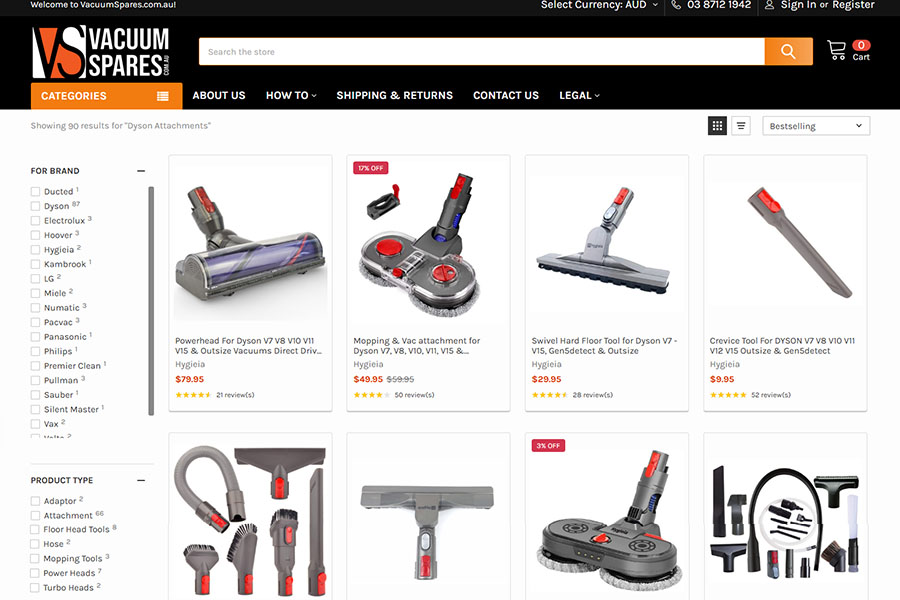
VacuumSpares.com.au is one of Australia’s go-to stores for vacuum parts and accessories, with a massive catalog and fast shipping across AUS and NZ. But when they came to us, their Google Ads account was burning cash without delivering significant results:
- Shopping campaigns were unsegmented
- Broad match caused irrelevant clicks
- No remarketing; no upsell strategy for high-margin spares and accessories
- We split their feed into separate campaigns for filters, batteries, motors, and bags, each with custom bids based on product margins.
- We excluded over 350 irrelevant search terms and launched targeted Search campaigns for keywords like “miele s500 filter replacement” and “shark vacuum hose.”
- We also set up dynamic remarketing for cart abandoners and viewers of high-margin SKUs. Once performance stabilized, we added a PMax campaign focused only on their top 50 bestsellers.
In 8 weeks:
- ROAS improved from 3.2 to 5.3
- Profit per order grew 48%
- Ad spend dropped 17% with no loss in revenue
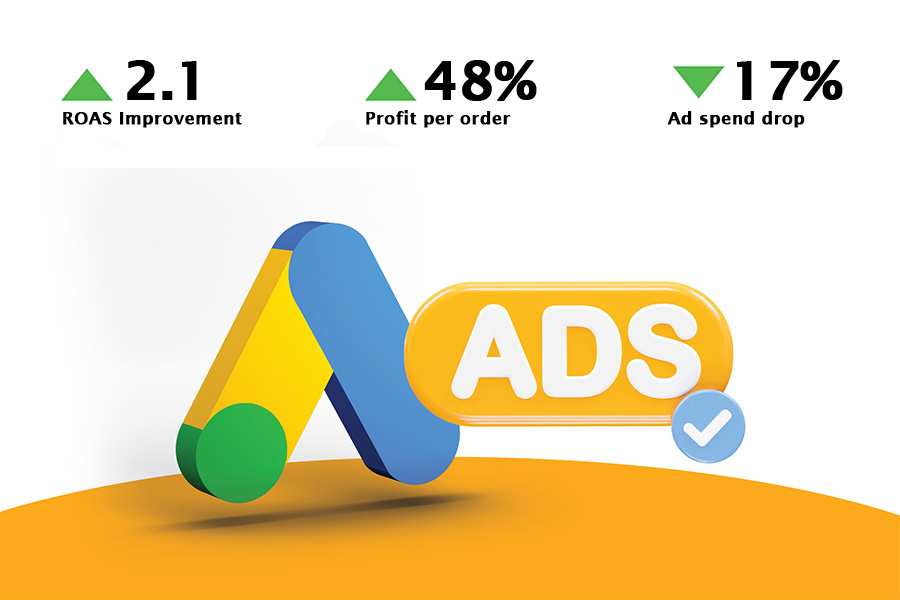
It wasn’t magic – just smart segmentation, tighter targeting, and deep understanding of the business.
Why a Good Google Ads Partner Pays for Themselves?
Knowing these core principles, you could theoretically run campaigns on your own.
But we didn’t get into step-by-step tactics here for a reason: that kind of guide would turn this article into a 10-day read.
More importantly, no two ecommerce businesses are exactly alike – even within the same niche. With every new client, we start from a clean baseline, not relying just on experience and previous accounts (although those help a lot).
That’s why, at some point, you’ll most likely need to delegate this task to an employee or an external partner.
And when choosing one, you should be careful.
Most ecommerce store owners come to us after they’ve already been burned by freelancers who “set and forget,” or agencies that chase impressions and clicks instead of actual profit.
A good Google Ads partner will:
- Understand your business
- Know how to protect your margins
- Cut what’s not working
- Push what’s driving profit

That’s how we work. And that’s what makes our clients money.
Let’s Turn Your Ads Into Profit
If you’ve made it this far, you already know that making a profit with Google Ads takes much more than just turning campaigns on.
They need structure, strategy, and a team that understands how YOUR ecommerce actually works.
That’s what we do at W3 Lab.
We’ve helped stores like Vacuum Spares clean up ad accounts, cut wasted spend, and turn Google Ads into a true game changer for their business.
And we can do the same for you.
We’ll show you what’s possible when every decision is backed by deep research, expert knowledge, and years of experience.
We don’t promise magic. We promise clarity, control, and campaigns that pay for themselves.
Want to see what that looks like for your business?

